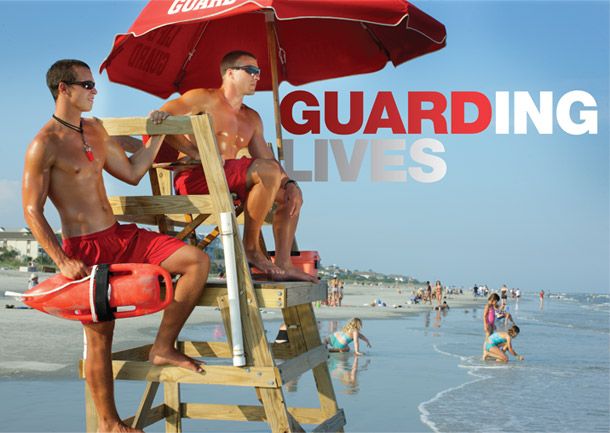Lifeguards play a critical role in maintaining safety in public swimming areas like pools, lakes, and beaches. Their responsibilities extend far beyond just sitting by the water and ensuring swimmers follow the rules lifeguard. A lifeguard’s job is one of vigilance, responsibility, and quick thinking, where every second counts.

The Role of a Lifeguard
A lifeguard’s primary responsibility is to ensure the safety of swimmers. They must be highly skilled in water rescue, first aid, and emergency response techniques. Lifeguards constantly scan their environment for potential hazards, remain physically fit, and maintain mental sharpness to act quickly in case of emergencies. Whether stationed at a busy beach or a neighborhood pool, their role is pivotal in preventing accidents and saving lives.
Early Morning Routine
For many lifeguards, the day starts early, often before the sun rises. They arrive at the beach or pool to prepare for the day ahead. The calm, quiet atmosphere contrasts sharply with the bustle that will come once swimmers arrive. Lifeguards typically have a set routine to follow, ensuring everything is in place to provide a safe environment.
Equipment Checks
Before anything else, lifeguards must ensure that all their equipment is in proper working order. This includes life-saving tools such as rescue tubes, whistles, first aid kits, and emergency radios. Checking and maintaining safety equipment is critical because, in an emergency, even a minor malfunction can make a huge difference.
Scanning the Water
Once everything is prepared, lifeguards take their positions. Their most crucial task throughout the day is scanning the water continuously. Unlike an ordinary bystander, a lifeguard must observe swimmers closely, watching for any sign of distress, exhaustion, or panic. The key to preventing incidents is detecting problems before they escalate.
Recognizing Distress
Recognizing a swimmer in distress is a skill that every lifeguard masters. Drowning can happen quickly and quietly, so lifeguards are trained to spot subtle signs, like irregular swimming patterns or frantic movements. In such cases, a lifeguard’s swift and accurate response is crucial.
Emergency Situations
Despite the best preventative measures, emergencies do occur. When they do, lifeguards must act swiftly and decisively. This could involve diving into the water to perform a rescue or administering first aid to an injured swimmer. Every second counts in these high-pressure situations, and lifeguards are trained to handle them with a calm demeanor.
CPR and First Aid
One of the most critical skills a lifeguard possesses is their ability to perform CPR and administer first aid. In cases of drowning, heart attacks, or other emergencies, these skills can be the difference between life and death. Lifeguards undergo rigorous training to ensure they can execute these procedures with precision.
The Physical Demands of the Job
Being a lifeguard is physically demanding. They must be in excellent shape to swim long distances, carry heavy equipment, and rescue individuals in distress. Lifeguards often train regularly to maintain their endurance and strength. Staying fit is essential because a rescue can require intense physical exertion.
Mental Toughness
Just as important as physical fitness is mental toughness. Lifeguards work long shifts in the sun, often for hours at a time, while maintaining constant vigilance. The ability to remain alert and focused, especially during potentially life-threatening situations, requires a strong mental fortitude.
Managing Crowds and Rules
Aside from rescues, lifeguards are also responsible for managing crowds and ensuring that safety rules are followed. They enforce guidelines such as “no running near the pool” or “swim within designated areas.” Some beachgoers or swimmers may resist these rules, but lifeguards must remain firm, knowing that these regulations exist to protect everyone.
The Importance of Communication
Effective communication is crucial for lifeguards. Whether signaling to other team members or communicating with swimmers, clear and concise communication can prevent accidents. Lifeguards often use hand signals, whistles, or radios to convey messages quickly in noisy, crowded environments.
Breaks and Downtime
Even though lifeguards are allowed breaks, they must remain alert at all times. Often, during downtime, they’ll monitor the water from a distance or ensure that all procedures are running smoothly. Taking short, efficient breaks helps them stay fresh and focused throughout the day.
End of the Day
As the day winds down, lifeguards perform one last sweep of the water, making sure all swimmers have exited safely. They close down their stations and prepare for the next day. Reflecting on the day’s events and making notes for future improvements is a part of the job.
Conclusion
Lifeguarding is a profession that demands physical stamina, mental strength, and unwavering dedication to safety. From scanning the waters to handling emergencies, lifeguards are the unsung heroes who ensure that our trips to the beach or pool are both fun and safe. The next time you see a lifeguard on duty, remember that they are constantly working, even when everything seems calm.
FAQs
- What qualifications are needed to become a lifeguard?
Lifeguards must complete certification courses that cover CPR, first aid, and water rescue techniques. - What are the working hours of a lifeguard?
Lifeguard shifts can vary, but they typically work long hours, especially during peak swimming season. - How do lifeguards handle high-stress situations?
Lifeguards are trained to stay calm under pressure and follow strict protocols to manage emergencies efficiently. - What is the most challenging part of being a lifeguard?
Maintaining constant vigilance for long hours and handling the physical demands of rescues are the most challenging aspects. - Why are lifeguard rules so strict?
The rules lifeguards enforce are there to prevent accidents and ensure the safety of everyone in the water.
